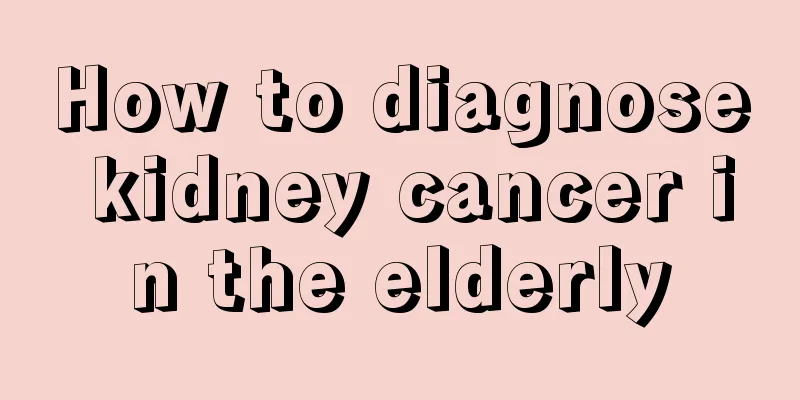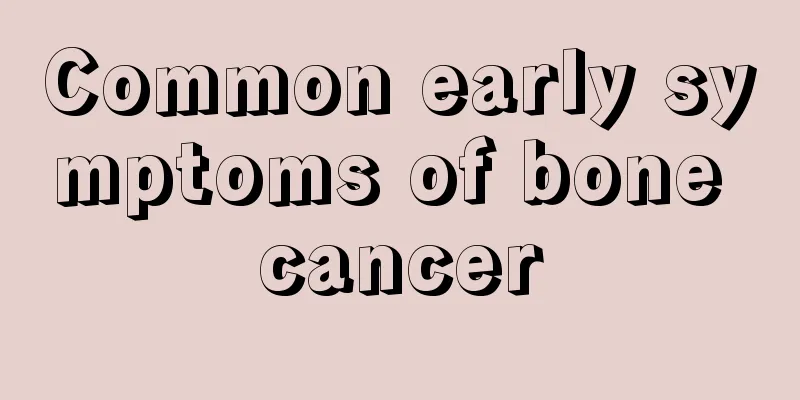How to diagnose kidney cancer in the elderly

|
The cause of kidney cancer in the elderly is still unclear. Smokers have an increased relative risk of kidney cancer. Smokers who are exposed to cadmium in industrial environments have a higher incidence of kidney cancer than normal people. Kidney cancer has a familial tendency. The incidence of kidney cancer varies from region to region, which may be related to urbanization, diet, and lifestyle habits. Renal cancer is often a single lesion on one side, with similar incidences on the left and right sides. Renal cancer may occur in both kidneys simultaneously or successively. Most renal cancers are round and of varying sizes. They can occur in all parts of the kidney. The tumor has no histological capsule, but has a pseudocapsule formed by compressed renal parenchyma and fibrous tissue. A few are uniformly yellow or brown, and most are accompanied by hemorrhage, necrosis, and fibrotic plaques. Hemorrhage and necrosis can form cysts, and some are papillary cystadenocarcinomas. The tumor may have calcification points. The tumor can destroy the entire kidney and invade adjacent fat, muscle tissue, blood vessels, lymphatic vessels, etc. The perinephric fascia is a barrier to prevent local spread. Renal cancer can easily spread into the veins to form cancer thrombi, which can extend to the renal vein, inferior vena cava, and even the right atrium. The spread of renal cancer to the tissues around the kidney, adjacent organs, and lymph nodes is more serious than the intravenous cancer thrombi. The ipsilateral involvement of the adrenal gland accounts for about 10%. Distant metastases are common to the lungs, brain, bones, liver, etc. Renal cancer cells are multipotent, with diverse tissues and cell phases. The typical type is clear cells, so it is also called clear cell carcinoma. There are also granular cell carcinomas or mixed types. There is also spindle cell carcinoma, which has a poor prognosis. Symptoms of kidney cancer in the elderly In the early stage of kidney cancer, there may be no symptoms at all. The patient's complaints and clinical manifestations vary, and it is easy to be misdiagnosed as other diseases. It is often discovered accidentally during physical examinations or other examinations such as B-ultrasound and CT, and some people call it incidental cancer. 1. Hematuria Hematuria is the most common symptom of kidney cancer. Hematuria can only occur when the tumor invades the renal pelvis, so it is no longer an early symptom. Hematuria is often painless and intermittent, with visible hematuria throughout the whole process. When kidney cancer bleeds a lot, it may be accompanied by renal colic, which is caused by blood clots passing through the ureter. The degree of hematuria has nothing to do with the size of kidney cancer. 2. Low back pain is mostly dull pain, caused by the growth of the tumor and swelling of the renal capsule. When the tumor invades surrounding organs and lumbar muscles, the pain is more severe and continuous. 3. Tumors: Renal cancer tumors are difficult to detect before they reach a considerable size. Generally, the tumor surface is smooth, hard, non-tender, and can move with breathing. 4. Systemic symptoms About 1/3 of patients have systemic symptoms. Fever is very common, mostly low-grade, continuous or intermittent. It is mostly caused by internal bleeding, necrosis and pyrogens in the tumor tissue. Increased blood pressure is caused by tumor compression of blood vessels, arteriovenous shunts in the tumor, and renin production by the tumor tissue. It may also be complicated by changes in the immune system, such as vasculitis. In the early stage of renal cancer, there may be no symptoms at all. The patient's complaints and clinical manifestations vary, and it is easy to be misdiagnosed as other diseases. It is often discovered accidentally during physical examinations or other examinations such as B-ultrasound and CT scans, and some people call it incidental cancer. 1. Hematuria Hematuria is the most common symptom of kidney cancer. Hematuria can only occur when the tumor invades the renal pelvis, so it is no longer an early symptom. Hematuria is often painless and intermittent, with visible hematuria throughout the whole process. When kidney cancer bleeds a lot, it may be accompanied by renal colic, which is caused by blood clots passing through the ureter. The degree of hematuria has nothing to do with the size of kidney cancer. 2. Low back pain is mostly dull pain, caused by the growth of the tumor and swelling of the renal capsule. When the tumor invades surrounding organs and lumbar muscles, the pain is more severe and continuous. 3. Tumors: Renal cancer tumors are difficult to detect before they reach a considerable size. Generally, the tumor surface is smooth, hard, non-tender, and can move with breathing. |
<<: Ultrasound diagnostic manifestations of renal cancer
>>: Do I still need to take medicine after kidney cancer surgery
Recommend
Current status of research on osteosarcoma
I believe everyone is familiar with the harmfulne...
How to relieve migraine pain? Try these measures
Everyone knows that Cao Cao during the Three King...
Is it really okay to wear disposable underwear
Whether male or female, their reproductive health...
Treatment of sequelae of lumbar disc herniation surgery
In daily life, many friends who have undergone su...
The function of a swimming cap
When swimming, many people will be fully armed wi...
Symptoms of hypothyroidism after iodine 131
Hypothyroidism is a very common thyroid problem a...
How to detoxify borax poisoning and what are the treatments
Borax is toxic to a certain extent and is quite h...
How to solve the problem of constant bloating and farting?
Some friends always feel that their stomach is bl...
Is melanoma hereditary?
Melanoma is one of the four types of malignant sk...
The harm of washing your hair and not drying it before going to bed
Washing hair is the most common thing in normal t...
What causes abdominal and back pain?
Stomach pain and back pain are common phenomena i...
What are the diagnostic criteria for bile duct cancer?
What are the diagnostic criteria for bile duct ca...
What happens if you eat laundry detergent?
In modern life, people often use special detergen...
Does high jump help you grow taller
Poor height development and short stature are iss...
Is massage effective for kidney yin deficiency
After reaching a certain age, many people will ha...









